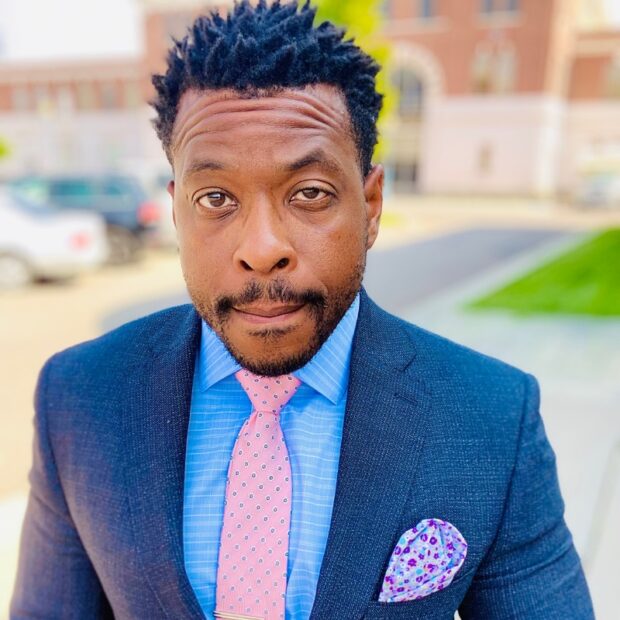POCATELLO — Sheldon L. Eakins is not shy about admitting his mistakes.
There was the time when, as a principal in Oregon, he didn’t act quickly enough when he heard about a young African-American student being teased.
There was the time he was serving lunch in a school cafeteria one day and wrongly assumed a Mexican-American student would want to be dished up a serving of Mexican-style beans.
And there was the time when he was teaching on the U.S. Virgin Islands and was unknowingly greeting people in a way that was considered rude in that culture.
Eakins is now the founder of the Leading Equity Center, the host of a podcast by the same name, and author of the book Leading Equity: Becoming an Advocate for all Students.

On Friday, he told attendees at a Diversity, Equity, and Inclusion in Education conference that sharing personal stories of missteps often helps open a dialogue about becoming more culturally responsive – and helps keep those conversations free of blaming and shaming. Those talks are then more likely to bridge people from different backgrounds.
About 100 people, including K-12 and college-level educators, attended the conference, which was hosted by Idaho State University’s College of Education.
Eakins and other presenters sought to provide information on how educators can become culturally-responsive and better advocates for equity, including by learning from mistakes, exposing students to diversity, and removing barriers to education.
“Equity advocates are not afraid to challenge and disrupt inequities taking place at school and in the community,” Eakins said.
“Our kids need someone who’s willing to speak up on behalf of them.”
According to Eakins, teaching through a culturally-responsive lens means:
- Disrupting traditional teaching practices and norms
- Seeing cultural differences as assets
- Having high expectations for all learners
- Embracing opportunities to develop meaningful relationships with students and families
It is not a one-and-done activity, tacking a few posters to the wall, or lowering standards.
And cultural responsiveness encompasses more than racial equity; it aims to foster parity among all groups, taking into account the many factors that contribute to individuals’ uniqueness, such as religion, gender, ability, nationality, and socioeconomic status.
Eakins said teachers should constantly be asking themselves: How am I showing students that I value their language, culture, and identity?
Teachers should also make sure they are not expecting a student to be the spokesperson for their entire group and that they are taking time to learn more about diverse communities by finding “books, articles, and publications written by … cultural insiders.”
Despite all efforts, most people will still make some mistakes when trying to advocate for equity. When that happens, Eakins said to acknowledge them, apologize, and don’t let them happen again.
The incident when Eakins didn’t respond quickly enough to reports of an African-American boy being teased has stayed with him, even eight years later.
“I’m not going to let that happen again. If I’m in a position of power as a school leader, I’m not going to let a student have their needs not be met because I’m too afraid of what others will think or about my status,” he said. “Our kids need someone who’s willing to speak up on behalf of them. If not me, who will?”
Eakins was one of nine different speakers who addressed a wide range of topics, including how to introduce students to diversity early on.
Rural students are more likely to experience culture shock on college campuses
Jennifer Reichart, the executive director of diversity, equity, inclusion and belonging for Richland Community College in Decatur, Ill., said teachers should be thinking about how to ease the culture shock that high school students — especially from rural areas — often experience in their first year at college.
Riechart shared the story of a student in one of her college English classes who was exposed to diverse classmates for the first time and eventually realized she was “a little bit racist,” as the student put it. The student worked with a mentor on the college faculty who helped her slowly unlearn her prejudice, and eventually the student began to develop more empathy for and understanding of those who were different from her.
Reichart said high school educators can help expose students to diversity before they get to college (and maybe even prevent culture shock) by offering the following opportunities:
- Field trips
- Job shadowing
- Work-integrated learning
- Online classes
- College visits
- Volunteering at food banks or homeless shelters
Students who take a gap year could also participate in the Peace Corps or AmeriCorps.
Once in college, students can participate in mentoring programs, college clubs and organizations, and what Reichart calls the elective lottery – signing up for the elective that seems least interesting to the student. That way, they are introduced to students who are different from themselves.
Having diverse teachers can also smooth the path to equitable education.
A lack of diverse teachers negatively impacts learning
Victoria Sethunya, a graduate student at Idaho State, called attention to the achievement gap between mathematics learners.
She said educators need to work to minimize redlining by providing students with equitable access to mathematical education and resources.
One problem African-American students face is a lack of teachers who look like them.
“Black teachers positively impact Black students’ learning, but workplace discrimination makes it difficult for Black teachers to stay,” Sethunya said. “Alongside the lack of Black educators, racism and stereotypes disincentivize Black students to become teachers.”
Sethunya said that a “business-as-usual” approach to math education will only perpetuate the status quo.
Increased access to education resources, more teaching aides, and improved cultural integration would also help to open pathways to math success for marginalized students, Sethunya said.
